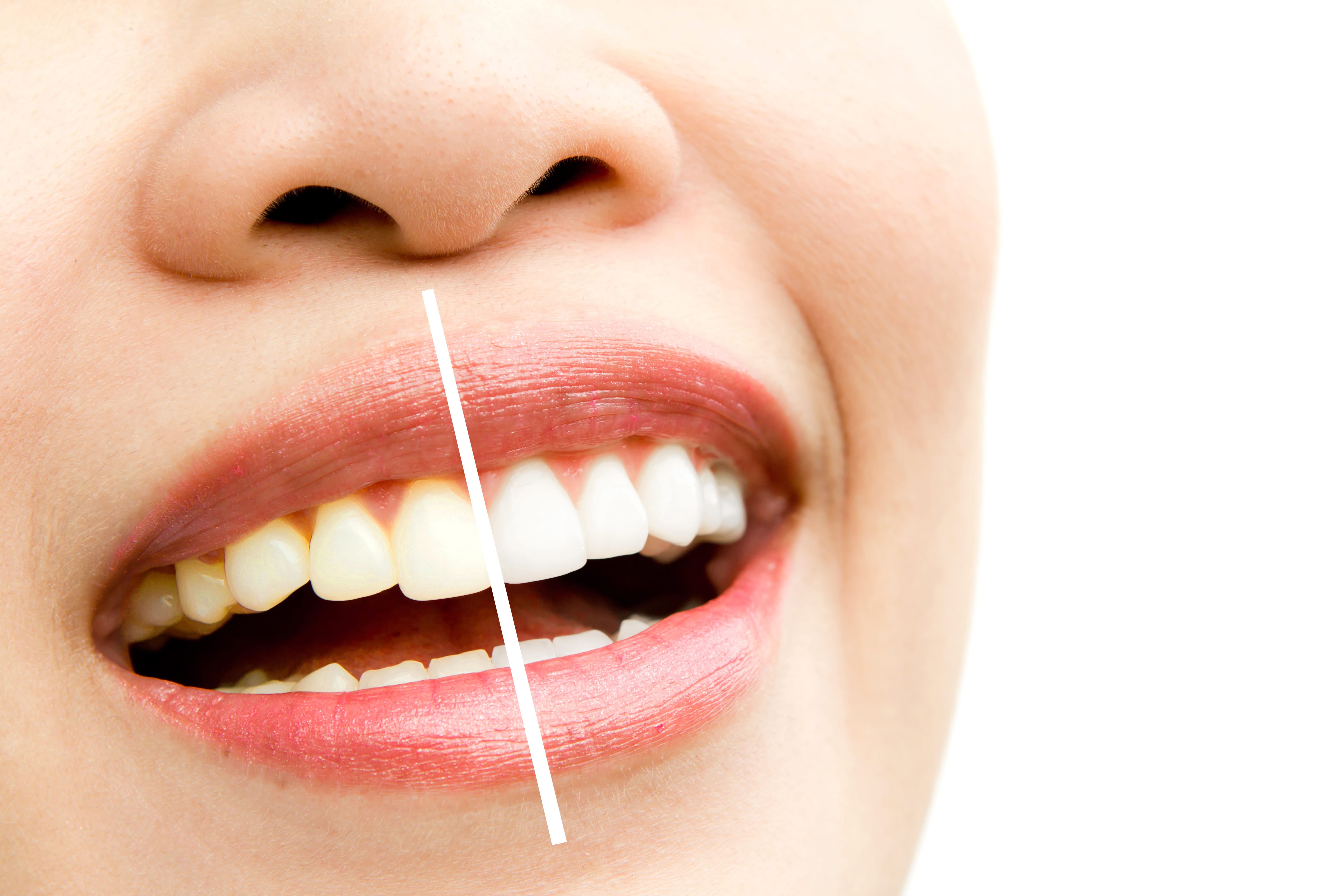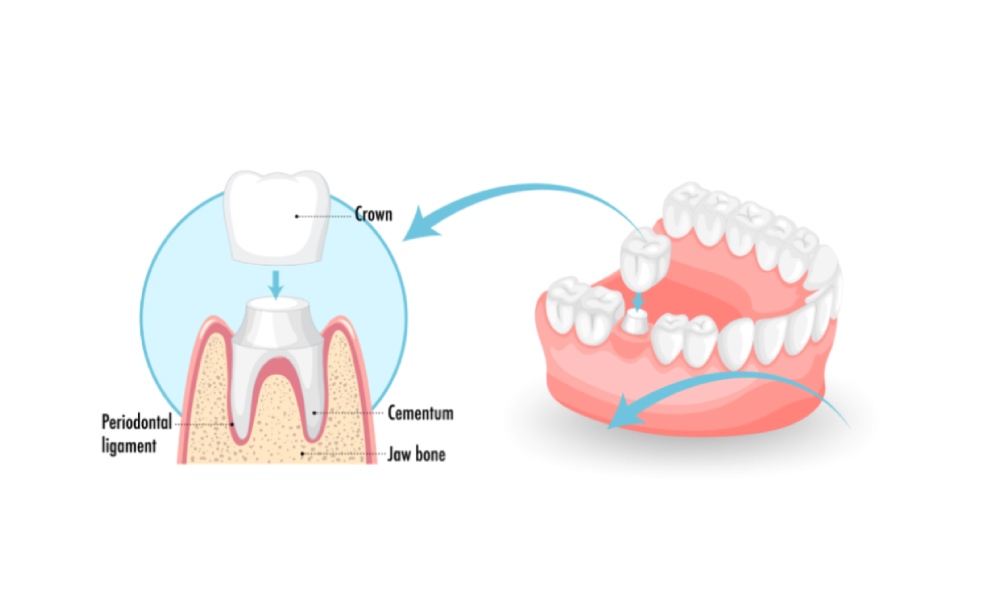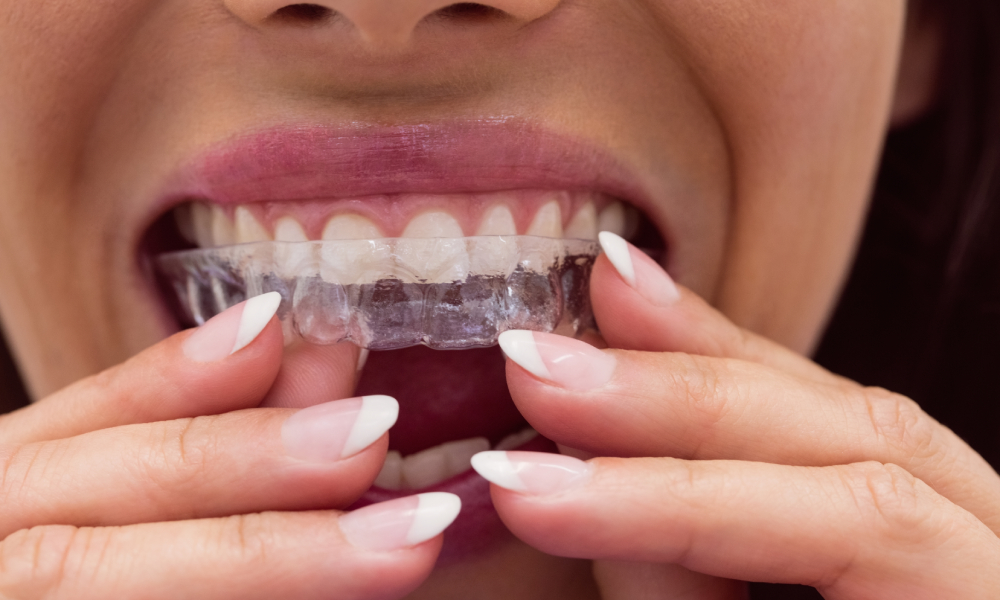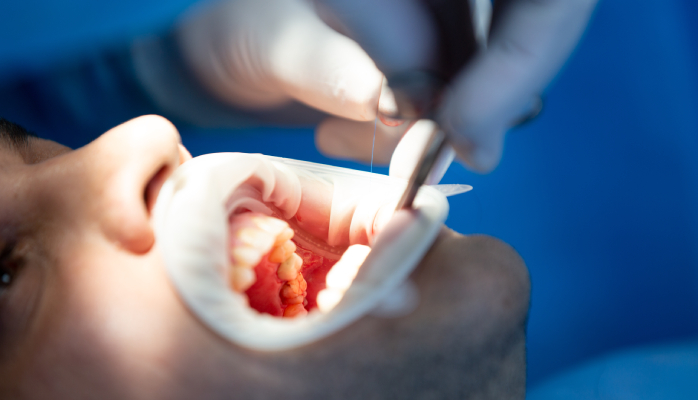What Are Dental Crowns?
A dental crown is a custom-made, tooth-shaped cover that is placed over a damaged or weakened tooth to restore its strength, shape, and natural appearance. Crowns help protect the tooth structure and ensure it functions like a healthy tooth again. Whether a large portion of the tooth is missing or has undergone root canal treatment, a crown can effectively safeguard and enhance its durability. Delaying a recommended dental crown can put the affected tooth at risk of further damage, possibly leading to extraction. In some cases, it may also harm neighboring teeth due to misalignment or uneven chewing pressure.
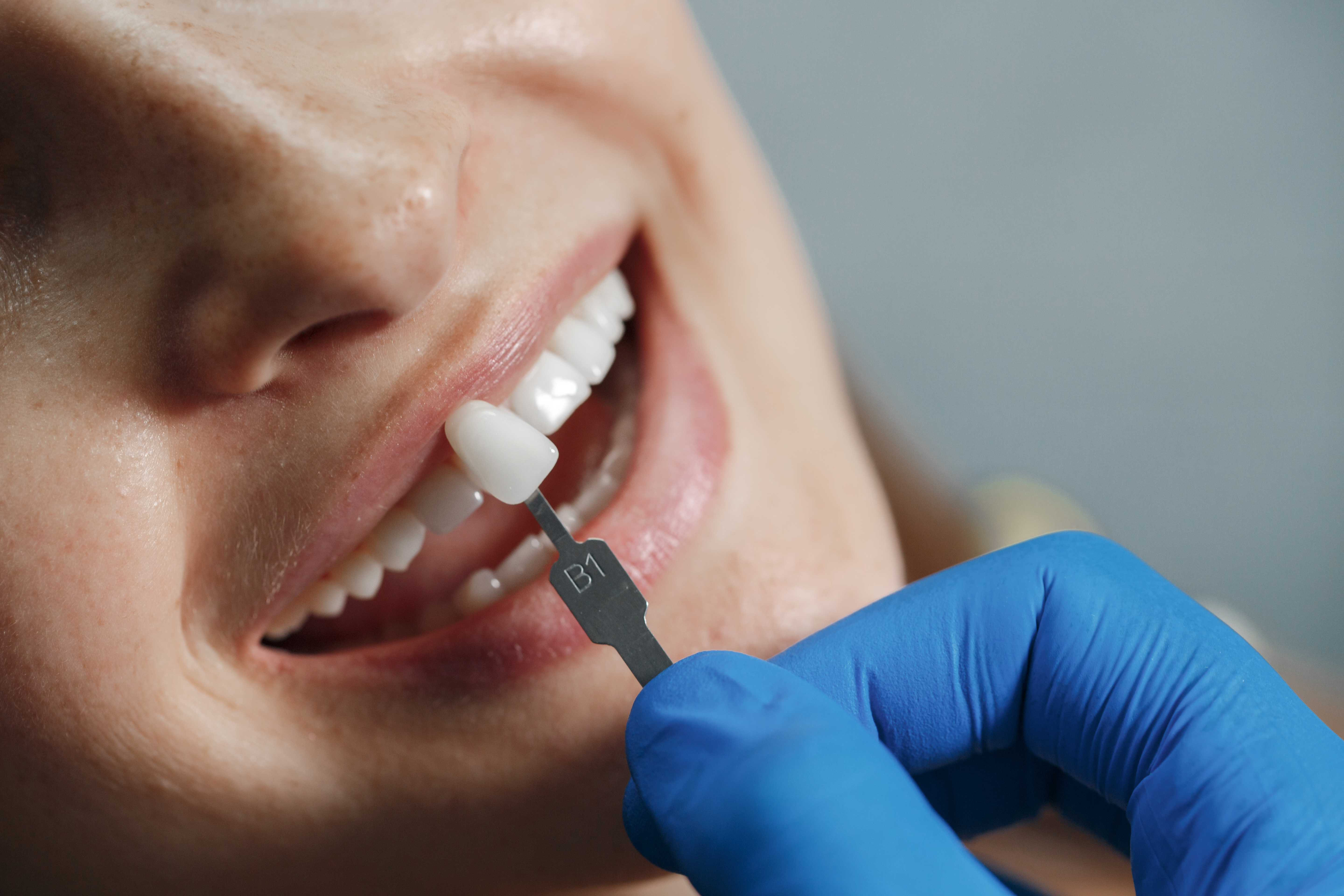
When Are Dental Crowns Needed?
Dental crowns are a versatile solution used in several scenarios:
- To protect a tooth weakened by decay, trauma, or fracture
- After root canal treatment, to cover and strengthen the treated tooth
- To restore a worn-down or broken tooth
- To support a dental bridge
- To cover a dental implant
- To enhance the appearance of stained, misshaped, or discolored teeth
Types of Dental Crowns
Crowns are made using different materials, and each type has its own benefits:
1. Metal Crowns
Metal crowns, often made from gold or other metal alloys, are highly durable and resistant to wear. They are ideal for molars since they can withstand chewing forces effectively. However, their metallic color makes them less suitable for visible teeth.
2. Porcelain-Fused-to-Metal (PFM) Crowns
PFM crowns combine the strength of metal with the natural look of porcelain. The metal base provides durability, while the outer porcelain layer mimics the appearance of natural teeth, making them a popular choice for both front and back teeth.
3. Ceramic or All-Porcelain Crowns
These crowns are known for their excellent aesthetics and are commonly used for front teeth. They provide a natural look and are metal-free, making them suitable for patients with metal allergies. However, they may not be as strong as metal or PFM crowns when used on molars.
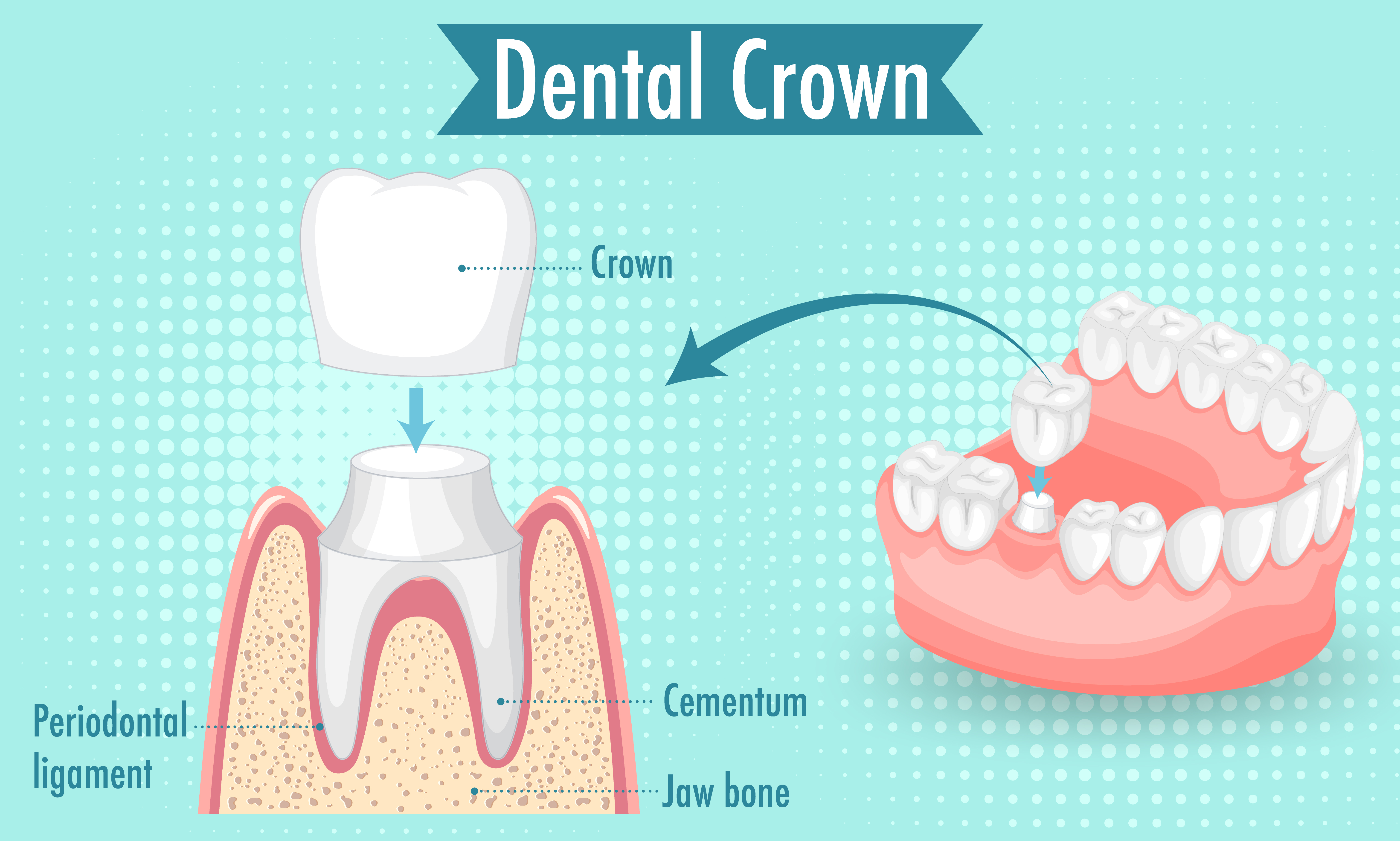
Do’s and Don’ts With Dental Crowns
Do:
- Maintain proper oral hygiene: brush twice and floss daily
- Use a mouthguard if you grind or clench your teeth
- Visit your dentist every 6 months for regular check-ups
- Choose a skilled dentist experienced in crown placement
Don’t:
- Use your teeth to open packages or bite hard objects
- Chew on ice, hard candies, or pens
- Eat very sticky foods that may dislodge the crown
- Consume extremely hot or cold items immediately after crown placement if sensitivity persists
Common Myths About Dental Crowns – Busted
Myth 1: Crowns don’t look natural
Truth: Modern crowns are made to match your natural teeth in color, size, and shape.
Myth 2: Crowns last forever
Truth: : With good care, crowns can last 10–15 years, sometimes longer, but they are not permanent.
Myth 3: Crowns stain easily
Truth: Materials like porcelain and zirconia are stain-resistant.
Myth 4: Crowns are only for damaged teeth
Truth: Crowns are also used in cosmetic dentistry to improve smile aesthetics.
Myth 5: You can’t get cavities with crowns
Truth: While the crown itself can’t decay, the tooth underneath still can if not properly cleaned.
Dental Crowns vs Dental Bridges
| Aspect |
Dental Crowns |
Dental Bridges |
|---|---|---|
| Purpose | Restore and protect a single damaged tooth | Replace one or more missing teeth |
| Structure | Cap that covers a single tooth | Artificial tooth/teeth supported by crowns |
| Number of Teeth Involved | One | At least three (two supporting, one or more pontics) |
| Material Options | Metal, porcelain, ceramic, zirconia | Same as crowns |
| Preservation | Retains the natural tooth | Requires shaving down adjacent teeth |
| Longevity | 5–15 years or more | 10–15 years with good care |
Crowns vs Bridges – How to Choose?
| Factor |
Dental Crown |
Dental Bridge |
|---|---|---|
| Oral Health Needs | Cracked or weakened tooth | Missing one or more teeth |
| Budget | More affordable | Usually costlier |
| Cosmetic Goals | Improves individual tooth | Fills gaps, restores smile |
Your dentist will recommend the best option based on function, aesthetics, and budget.
What Are Dental Crowns?
Usually 10–15 years, potentially longer with good care. Factors affecting lifespan:
- Material: Zirconia and metal last longer
- Oral hygiene: Brushing, flossing, regular check-ups
- Habits: Avoid using teeth as tools, biting nails, grinding
- Fit and placement: Quality placement extends durability
